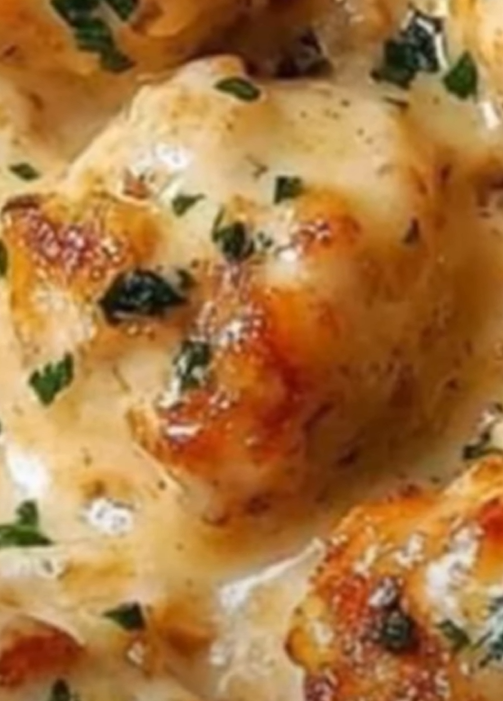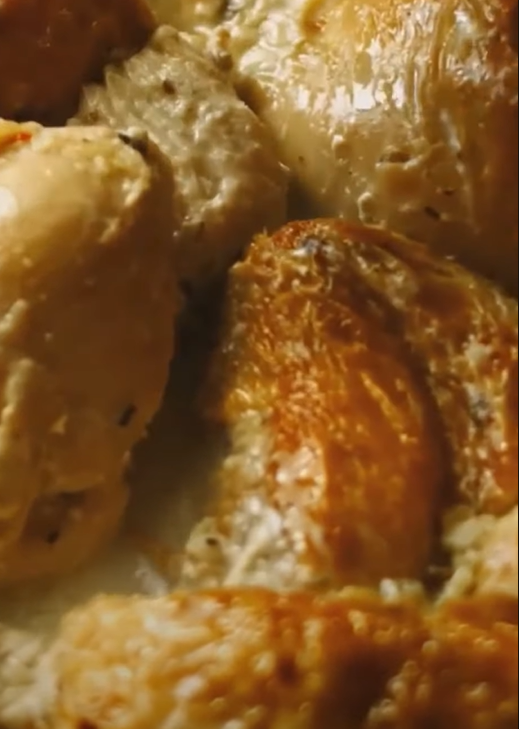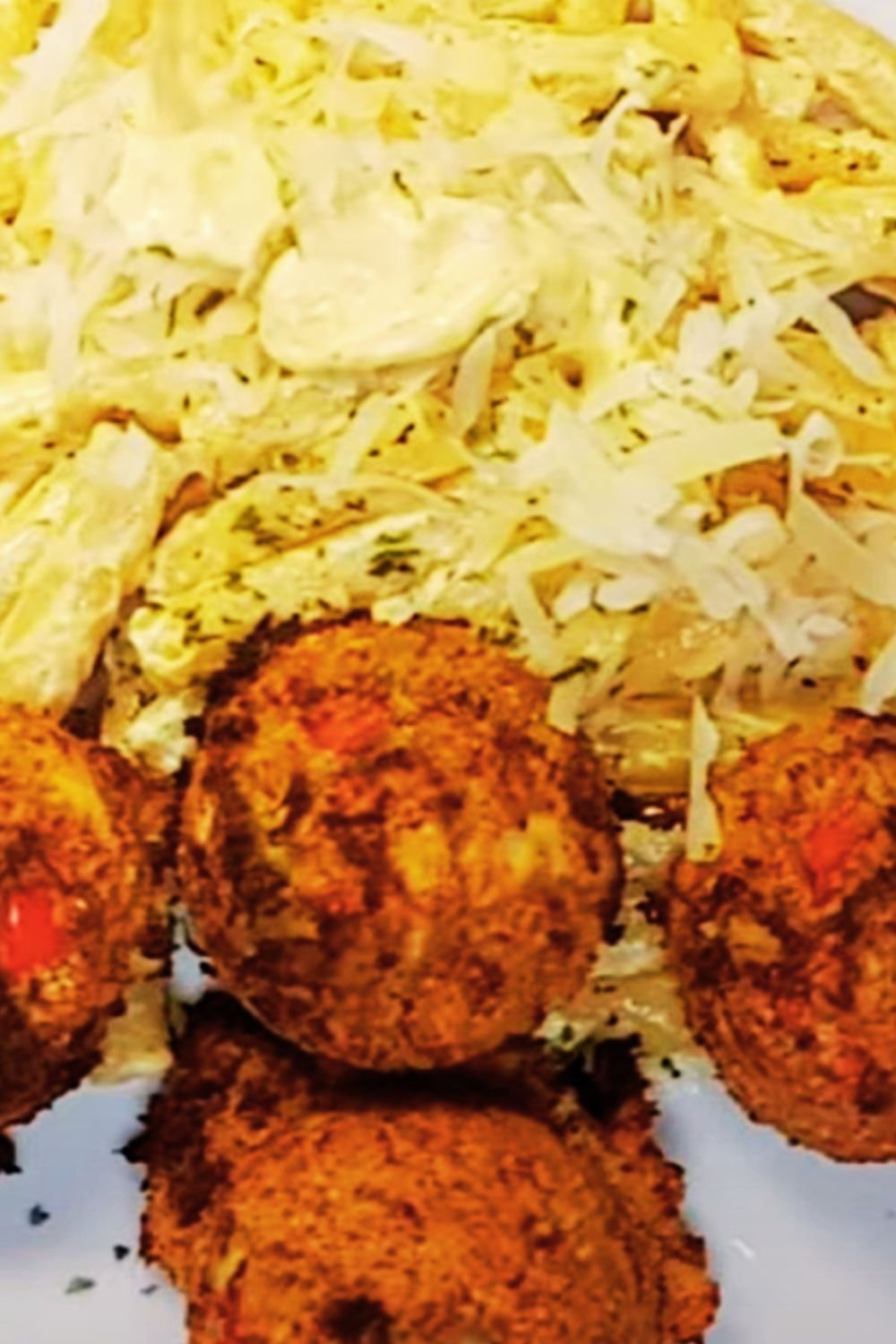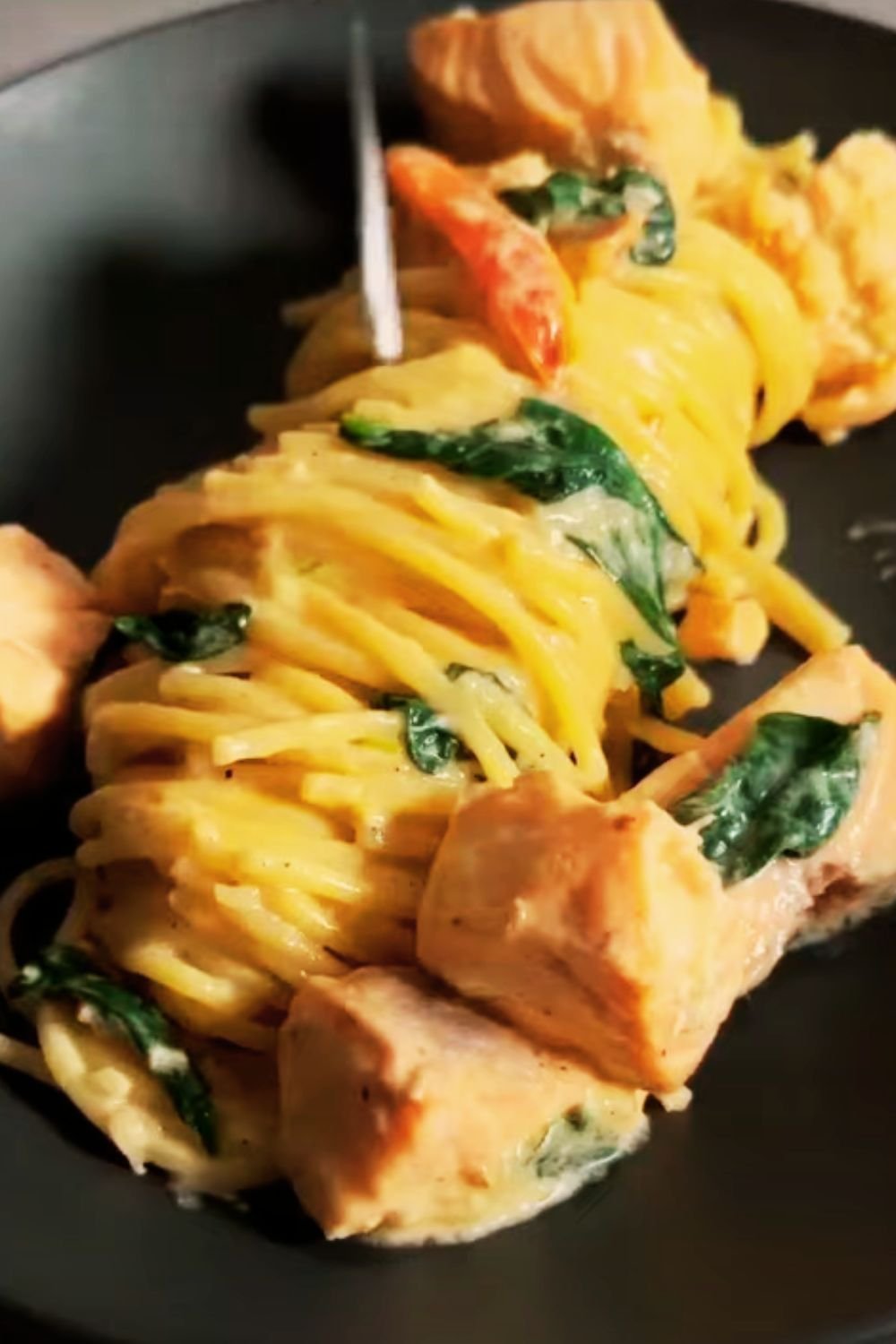When I first laid eyes on these vibrant blue cookies stuffed with chocolate chip cookie dough, I knew I had discovered something magical. These Big Blue Monster Stuffed Cookies aren’t just desserts—they’re edible works of art that bring out the child in everyone. My journey with these whimsical treats began during a particularly creative baking session, and now they’ve become my signature dessert for parties, celebrations, and those moments when life calls for something extraordinary.
The beauty of these cookies lies in their playful nature and incredible texture contrast. Picture this: a soft, chewy blue-tinted cookie exterior that gives way to a surprise center of edible chocolate chip cookie dough. Each bite delivers multiple textures and flavors that dance on your palate. I’ve served these at birthday parties where adults were just as excited as children, and I’ve gifted them to friends who still talk about them months later.
Understanding the Magic Behind Monster Cookies
Blue Cookie Base : The foundation cookie that provides the signature blue color and chewy texture, typically made with butter, sugar, eggs, flour, and blue food coloring
Stuffed Center : Safe-to-eat cookie dough filling made without raw eggs, usually featuring chocolate chips and a buttery, sweet flavor profile
Monster Aesthetic : The fun, whimsical appearance that mimics Cookie Monster’s beloved treats, often enhanced with additional chocolate chips or decorative elements
Texture Contrast : The delightful difference between the soft outer cookie and the denser, cookie dough-like center that creates an exciting eating experience
Creating these cookies requires understanding the balance between moisture, sweetness, and structural integrity. The blue base needs enough structure to hold the filling without becoming tough, while the stuffed center must maintain its shape during baking without becoming too dense or crumbly.
Essential Ingredients Breakdown
My experience has taught me that ingredient quality makes or breaks these cookies. I’ve experimented with various brands and types, and my findings might surprise you.
| Ingredient Category | Recommended Type | Why It Matters | Substitution Options |
|---|---|---|---|
| Blue Food Coloring | Gel-based professional grade | Provides vibrant color without thinning dough | Liquid (use less), Natural blue spirulina |
| Butter | European-style unsalted | Higher fat content creates richer texture | Regular unsalted butter, vegan butter |
| Flour | All-purpose unbleached | Proper protein content for structure | Cake flour (reduce by 2 tbsp), Gluten-free blend |
| Chocolate Chips | Semi-sweet mini chips | Size and sweetness balance | Dark chocolate chips, white chocolate, candy pieces |
| Vanilla Extract | Pure vanilla, not imitation | Enhances overall flavor complexity | Vanilla bean paste, almond extract |
| Brown Sugar | Light brown, packed | Adds moisture and chewy texture | Dark brown sugar, coconut sugar |
The secret to my success with these cookies lies in the temperature of ingredients. I always bring my eggs to room temperature naturally, never rushing with warm water. Cold butter creates different textures than room temperature butter, and I’ve learned to read the dough’s consistency to determine if my ingredient temperatures are correct.
My Foolproof Recipe Formula
After countless batches and minor adjustments, I’ve perfected my approach to these show-stopping cookies. The process requires patience, but the results are absolutely worth every minute invested.
For the Blue Cookie Base:
- 2¼ cups all-purpose flour
- 1 teaspoon baking soda
- 1 teaspoon salt
- 1 cup unsalted butter, room temperature
- ¾ cup granulated sugar
- ¾ cup packed light brown sugar
- 2 large eggs, room temperature
- 2 teaspoons pure vanilla extract
- 1-2 teaspoons blue gel food coloring
- ½ cup mini chocolate chips
For the Cookie Dough Stuffing:
- ½ cup unsalted butter, softened
- ¼ cup granulated sugar
- ¼ cup packed brown sugar
- 2 tablespoons milk or cream
- 1 teaspoon vanilla extract
- 1 cup all-purpose flour
- ½ teaspoon salt
- ⅓ cup mini chocolate chips
Step-by-Step Preparation Method
My technique has evolved through trial and error, and I’ve discovered that timing and temperature control are crucial for perfect results.
Preparing the Cookie Dough Filling:
I always start with the filling because it needs time to firm up in the refrigerator. In my stand mixer fitted with the paddle attachment, I cream the softened butter with both sugars until the mixture becomes light and fluffy—this typically takes about three minutes on medium speed. I then add the milk and vanilla, beating until well combined.
Next, I gradually add the flour and salt, mixing on low speed until just combined. I avoid overmixing at this stage because it can make the filling tough. Finally, I fold in the mini chocolate chips by hand using a wooden spoon. The mixture should be slightly sticky but hold together when pressed. I shape this mixture into small balls, about 1 tablespoon each, and place them on a parchment-lined plate. Into the refrigerator they go for at least 30 minutes.
Creating the Blue Cookie Base:
While the filling chills, I prepare my blue cookie dough. I start by whisking together the flour, baking soda, and salt in a medium bowl—this ensures even distribution of the leavening agents. In my stand mixer, I cream the room temperature butter with both sugars until pale and fluffy, which takes about four minutes on medium-high speed.
I add the eggs one at a time, beating well after each addition, then incorporate the vanilla extract. Here comes the fun part: adding the blue food coloring. I start with one teaspoon of gel coloring and mix thoroughly before deciding if I need more. The goal is a vibrant blue that reminds everyone of Cookie Monster without being so intense that it stains teeth.
Gradually, I mix in the flour mixture on low speed until just combined, then fold in the mini chocolate chips. The dough should be soft but not sticky—if it’s too wet, I add a tablespoon of flour at a time until it reaches the right consistency.
Assembly and Baking Process:

This is where patience pays off. I take about 2 tablespoons of blue cookie dough and flatten it in my palm. I place a chilled cookie dough ball in the center and carefully wrap the blue dough around it, sealing the edges completely. Any gaps will result in the filling leaking during baking, so I take my time with this step.
I place the assembled cookies on parchment-lined baking sheets, spacing them about 2 inches apart. They need room to spread slightly during baking. I preheat my oven to 350°F and bake for 10-12 minutes, until the edges are set but the centers still look slightly underbaked. This ensures the cookies remain soft and chewy.
The cooling process is equally important. I let them rest on the baking sheet for 5 minutes before transferring to a wire rack. This prevents them from falling apart while still warm.
Advanced Techniques and Troubleshooting
Through my baking journey, I’ve encountered various challenges and developed solutions that consistently produce perfect results.
Common Issues and Solutions:
| Problem | Cause | My Solution | Prevention Tip |
|---|---|---|---|
| Filling Leaks Out | Incomplete sealing or overfilling | Reduce filling amount, ensure proper sealing | Use less filling, pinch edges firmly |
| Cookies Spread Too Much | Dough too warm or butter too soft | Chill dough 30 minutes before baking | Keep ingredients cool, don’t overwork dough |
| Uneven Blue Color | Insufficient mixing or gel clumping | Add coloring gradually, mix thoroughly | Start with less coloring, add more as needed |
| Dry, Crumbly Texture | Overbaking or too much flour | Reduce baking time, measure flour correctly | Use kitchen scale, watch oven closely |
| Centers Too Raw | Underbaking or filling too large | Increase baking time slightly | Make smaller filling balls |
Professional Tips I’ve Learned:
Temperature control extends beyond just ingredient temperatures. I always use an oven thermometer because home ovens can be off by 25 degrees or more. I also rotate my baking sheets halfway through the baking time to ensure even browning.
For the most vibrant blue color, I’ve discovered that gel food coloring works far better than liquid. Americolor and Wilton make excellent gel colorings that won’t thin your dough. I also add a tiny amount of violet food coloring with the blue—this prevents the cookies from looking too cyan and gives them a more appealing blue hue.
Nutritional Information and Dietary Considerations
Understanding the nutritional profile helps me serve these treats responsibly and make informed modifications when needed.
| Nutritional Aspect | Per Cookie (Approximate) | Daily Value % | Notes |
|---|---|---|---|
| Calories | 285 | 14% | High due to butter and sugar content |
| Total Fat | 12g | 18% | Primarily from butter |
| Saturated Fat | 7g | 35% | Consider portion size |
| Carbohydrates | 43g | 14% | From flour and sugars |
| Sugar | 28g | 31% | Natural and added sugars |
| Protein | 3g | 6% | From flour and eggs |
| Sodium | 195mg | 8% | From salt and baking soda |
| Fiber | 1g | 4% | Minimal from flour |
Dietary Modifications I’ve Successfully Tested:
For gluten-free versions, I use a high-quality gluten-free flour blend in a 1:1 ratio, though I add an extra 2 tablespoons to account for different absorption rates. The texture changes slightly—they become a bit more tender—but the flavor remains excellent.
Vegan adaptations work well using plant-based butter and egg replacers. I use aquafaba (chickpea liquid) as an egg substitute, using 3 tablespoons per egg. The cookies maintain their structure beautifully.
For reduced sugar versions, I can successfully reduce the sugar by up to 25% without significantly affecting texture, though the cookies won’t be quite as soft and chewy.
Storage and Serving Suggestions
Proper storage has become crucial in my household because these cookies disappear quickly when stored incorrectly or become stale when not protected properly.
Short-term Storage (Up to 1 Week): I store cooled cookies in an airtight container at room temperature, placing parchment paper between layers to prevent sticking. They maintain their optimal texture for about five days this way.
Long-term Storage (Up to 3 Months): For longer storage, I wrap individual cookies tightly in plastic wrap, then place them in freezer bags. They thaw beautifully at room temperature in about 30 minutes.
Serving Presentation Ideas: I love serving these cookies on colorful plates that complement their blue hue. For parties, I arrange them on tiered stands with other colorful treats. They pair wonderfully with cold milk, hot cocoa, or vanilla ice cream for an extra indulgent dessert.
When gifting these cookies, I package them in clear cellophane bags tied with blue ribbons. The visual impact is incredible, and recipients always appreciate the thoughtful presentation.
Seasonal Variations and Creative Adaptations
My creativity with these cookies has led to numerous seasonal variations that keep the concept fresh and exciting throughout the year.
Holiday Adaptations:
- Halloween: Orange base with black chocolate chips and candy eyes
- Christmas: Red and green swirled base with white chocolate filling
- Valentine’s Day: Pink base with strawberry-flavored cookie dough center
- Easter: Pastel yellow base with lemon cookie dough filling
Flavor Variations I’ve Perfected:
- Funfetti Monster: White base with rainbow sprinkles and vanilla filling
- Chocolate Monster: Double chocolate base with peanut butter cookie dough center
- Strawberry Monster: Pink base with freeze-dried strawberry powder and white chocolate filling
- Mint Monster: Green base with mint extract and chocolate chip filling
Each variation follows the same basic technique but allows for creative expression and seasonal relevance.
Frequently Asked Questions
Q. Can I make the cookie dough filling ahead of time? Absolutely! I often prepare the filling up to three days in advance and store it covered in the refrigerator. This actually improves the flavor as the ingredients have time to meld together. Just let it come to room temperature slightly before shaping if it becomes too firm.
Q. Why do my cookies turn out flat instead of thick and chewy? This usually happens when the butter is too warm or the dough hasn’t been chilled properly. I always make sure my butter is softened but not melted, and I chill the assembled cookies for at least 15 minutes before baking. Also, check that your baking soda is fresh—old leavening agents won’t provide proper lift.
Q. How can I achieve a more vibrant blue color without using too much food coloring? I use gel food coloring instead of liquid, which provides more intense color without thinning the dough. Start with a small amount and gradually add more until you reach the desired shade. Adding a tiny drop of violet food coloring with the blue creates a more appealing hue.
Q. Can I freeze the unbaked assembled cookies? Yes, this is actually one of my favorite time-saving techniques! I assemble the cookies completely, place them on baking sheets, and freeze until solid. Then I transfer them to freezer bags. They can be baked directly from frozen, just add 1-2 extra minutes to the baking time.
Q. What’s the secret to preventing the filling from leaking during baking? The key is thorough sealing and proper filling size. I make sure the cookie dough ball is completely enclosed by the blue dough, pinching the seams firmly. If you’re having trouble, try making the filling balls smaller—they’re easier to wrap completely.
Q. How do I know when the cookies are perfectly baked? I look for edges that are set but centers that still appear slightly underbaked. The cookies will continue cooking slightly on the hot pan after removal from the oven. They should feel firm around the edges but still soft in the center when gently pressed.
Q. Can I make these cookies without a stand mixer? Definitely! I’ve made them successfully with a hand mixer, though it takes a bit more time to achieve the proper creaming of butter and sugars. You can even make them by hand with a wooden spoon, though it requires more elbow grease and patience.
Q. Why did my blue dough turn purple or green? This typically happens when the food coloring reacts with acidic ingredients or when using certain brands of coloring. I stick to trusted brands like Americolor or Wilton, and I add the coloring gradually to monitor the color development.
Q. How can I make these cookies healthier without sacrificing taste? I’ve had success substituting up to half the all-purpose flour with whole wheat pastry flour, reducing sugar by 20%, and using Greek yogurt in place of some butter. While the texture changes slightly, they remain delicious and satisfying.
Q. What’s the best way to transport these cookies for events? I use sturdy containers with tight-fitting lids and place parchment paper between layers. For longer transport, I slightly underbake them so they don’t become too crispy during travel. They’re quite sturdy once properly cooled.
These Big Blue Monster Stuffed Cookies have become more than just a recipe in my kitchen—they’re a source of joy, creativity, and connection with others. Every time I make them, I’m reminded of the power of baking to bring smiles and create lasting memories. Whether you’re baking for a special occasion or simply because you want to try something new and exciting, these cookies deliver on every level. The combination of visual appeal, textural contrast, and delicious flavor makes them a standout treat that never fails to impress. Take your time with the process, enjoy the creative aspects, and most importantly, have fun sharing these magical cookies with the people you care about.


